Introduction to Belt Measurement

Belt measurement is the process of determining the appropriate size for a belt. This involves carefully measuring the circumference of the wearer’s waist or other relevant body part, ensuring a proper fit for the intended purpose. Accurate measurement is crucial to avoid discomfort, slippage, or the belt not performing its intended function.
Accurate belt measurement is essential for comfort and functionality. An improperly sized belt can be uncomfortable, leading to chafing, pain, or even injury. Furthermore, a belt that is too loose may not provide adequate support, while one that is too tight can restrict blood flow and cause discomfort. The precision of the measurement dictates the belt’s ability to properly support and hold the garment it’s used for.
Belt Types and Measurement Needs
Different types of belts have varying measurement needs depending on their intended use. Understanding these differences is vital for achieving a proper fit. Dress belts, for instance, often prioritize aesthetic appeal and a precise fit, whereas work belts prioritize durability and the ability to hold tools or equipment.
| Belt Type | Typical Measurement Needs |
|---|---|
| Dress Belts | Precision is paramount. Measurements are taken around the waist, focusing on achieving a sleek and tailored fit. Consider the width of the belt, as well as the style. |
| Work Belts | Durability and practicality are key. Measurements should allow for adequate support and comfort, while also factoring in the weight of tools or equipment. The style and width may differ based on the type of work. |
| Casual Belts | Comfort and flexibility are crucial. Measurements need to be comfortable enough for everyday wear, allowing for movement and flexibility. The width and material often influence the fit. |
| Formal Belts | Similar to dress belts, precise measurements are important for maintaining a formal look. The style and material may also influence the measurement needs. |
| Children’s Belts | Measurements need to be tailored to the child’s body size and growth. Frequent re-measurements may be needed as the child grows. |
Tools and Materials Needed
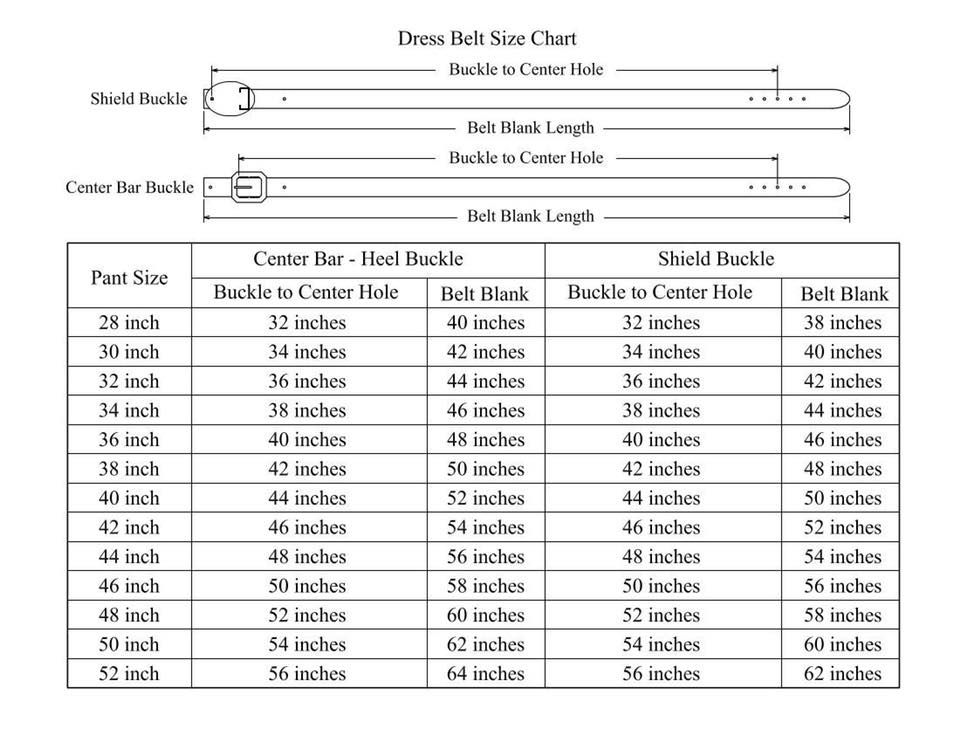
Accurate belt measurement is crucial for proper fitting and performance. The right tools are essential for obtaining precise dimensions and ensuring the longevity of the belt. Using inappropriate or poorly maintained tools can lead to inaccurate measurements, potentially resulting in costly errors or even safety hazards. Selecting and using the right tools is paramount for reliable results.
Essential Measuring Tools
Precise measurement requires appropriate tools. A range of instruments is available, each with specific capabilities and applications. Choosing the right tools is paramount for obtaining accurate and reliable measurements.
- A flexible measuring tape is an indispensable tool for measuring belt length. High-quality tapes, typically made of durable materials like steel or reinforced plastic, offer accurate readings and resist stretching. A tape measure with a locking mechanism prevents accidental slippage during use. These tapes are available in various lengths, catering to different belt sizes.
- A ruler, often a standard metric or imperial ruler, is valuable for measuring belt width. A ruler ensures precise measurements for determining belt width. These tools provide highly accurate measurements, particularly for determining precise belt width. A sturdy and durable ruler, preferably made of metal or a similar material that won’t warp, is crucial for accuracy.
- A caliper is an essential tool for measuring belt thickness. Calipers, available in various types (digital or mechanical), offer precise measurements. These tools allow for the determination of the belt’s thickness, essential for proper selection and application. Digital calipers offer automatic readings, improving speed and accuracy. Mechanical calipers require manual reading, which can take practice to master.
Characteristics of High-Quality Measuring Tools
High-quality measuring tools are characterized by accuracy, durability, and ease of use. These attributes ensure reliable measurements and minimize errors.
- Accuracy: High-quality measuring tools exhibit minimal error in their readings. This precision is essential for ensuring the accuracy of the belt measurements. Manufacturers often specify the degree of accuracy of their measuring tools.
- Durability: Robust construction is critical for long-term use. The tools should resist wear and tear, maintaining accuracy over time. This includes resistance to bending, stretching, and impacts.
- Ease of Use: The tool should be user-friendly and straightforward to operate. This ensures that measurements can be taken quickly and efficiently, minimizing errors. Clear markings, easy-to-read displays, and secure mechanisms are essential features.
Comparison of Measuring Tools, How to measure a belt
This table summarizes the tools and their applications in belt measurement. It provides a concise overview of the features and functions of each tool.
| Tool | Use in Belt Measurement |
|---|---|
| Flexible Measuring Tape | Measuring belt length |
| Ruler | Measuring belt width |
| Caliper | Measuring belt thickness |
Importance of Tool Maintenance
Regular maintenance of measuring tools is vital for preserving their accuracy and prolonging their lifespan. This practice is crucial for ensuring the reliability of measurements.
- Cleaning: Regularly clean the tools to remove dust, debris, or any other foreign materials. This prevents damage to the measuring surfaces.
- Calibration: Periodically calibrate the tools against known standards to ensure accuracy. This ensures that the readings obtained are consistent and reliable.
- Storage: Proper storage is important to maintain the integrity of the tools. Store tools in a dry, dust-free environment to prevent damage.
Measuring Procedures
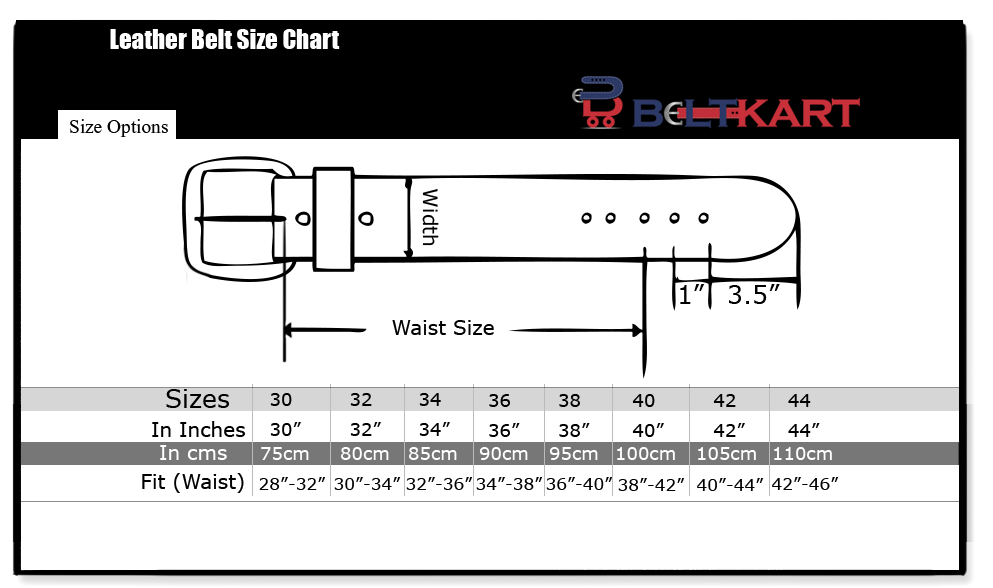
Accurately measuring a belt is crucial for various purposes, from tailoring to ensuring a proper fit. This section details the step-by-step procedures for measuring different belt types, emphasizing the correct use of measuring tools and the consideration of specific belt features.
Proper belt measurement ensures a perfect fit, avoiding discomfort or ill-fitting garments. This approach is especially important for belts that are not standard in length or width.
Belt Measurement Procedures
The process involves a systematic approach, starting with the belt type and its specific characteristics. Careful attention to detail is essential to avoid errors.
- Measuring the Length: For standard belts, measure from the buckle to the end of the belt. This measurement is typically taken along the belt’s central axis, aligning the measuring tape with the belt’s center. For belts with adjusters, measure from the buckle to the last functional adjuster setting, considering the final length you desire.
- Measuring the Width: Measure the widest part of the belt, perpendicular to the length measurement. Ensure the tape is placed evenly across the belt’s width. This measurement is important for determining the belt’s overall dimensions and is crucial for matching the belt to the intended use.
Measuring Different Belt Types
Various belt types require tailored measurement approaches.
- Standard Belts: Measure from the buckle to the end of the belt, ensuring the measuring tape aligns with the belt’s center. Measure the widest part of the belt perpendicular to the length measurement.
- Belts with Adjusters: Measure from the buckle to the last functional adjuster setting, noting the length desired. Consider the belt’s intended use and comfort levels. Measure the widest part of the belt perpendicular to the length measurement, accounting for the adjuster’s position.
- Curved Belts: Measuring curved belts requires special care. Carefully wrap the measuring tape around the belt’s curve, ensuring even contact throughout. Use a separate measuring tool for sections of the belt with significant curvature.
Using a Measuring Tape
A measuring tape is an essential tool for accurate belt measurement.
- Proper Placement: Ensure the tape is placed along the belt’s central axis for length measurements and perpendicular to the length for width measurements.
- Even Tension: Maintain consistent tension throughout the measurement process to avoid inaccurate readings. Avoid overly tight or loose readings.
- Accurate Readings: Carefully note the measurements, paying attention to the markings on the tape. Verify measurements to ensure accuracy.
Handling Buckles and Adjusters
Belt buckles and adjusters require specific considerations during the measurement process.
- Buckles: The buckle’s size and style should be noted. Measure from the buckle’s end to the belt’s end, accounting for the buckle’s protrusion or recess.
- Adjusters: Adjust the adjusters to the desired length before measurement. Measure from the buckle to the last functional adjuster setting. Note the adjustment mechanism’s configuration.
Measuring Procedures Table
| Belt Type | Length Measurement | Width Measurement | Specific Considerations |
|---|---|---|---|
| Standard Belt | From buckle to end, along center axis | Widest part, perpendicular to length | No adjusters, simple measurement |
| Belt with Adjusters | From buckle to last functional adjuster setting | Widest part, perpendicular to length | Consider final length and adjuster position |
| Curved Belt | Wrap tape around curve, ensuring even contact | Widest part, perpendicular to curve | Use separate tools for curved sections |
Measuring Belt Length

Accurate belt length measurement is critical for proper installation and functionality in various applications. Whether it’s a conveyor belt in a factory, a timing belt in a machine, or a simple belt for a DIY project, the correct length is essential to avoid issues like slippage, premature wear, or equipment malfunction. Understanding the different methods and considerations involved in belt length measurement is crucial for achieving this accuracy.
Methods for Measuring Belt Length
Several methods can be used to determine belt length, each with its own advantages and disadvantages. The most suitable method depends on the type of belt and the level of precision required. Choosing the appropriate technique is vital to ensure an accurate measurement.
- Direct Measurement: For relatively short belts, direct measurement using a measuring tape or ruler is a straightforward and often sufficient approach. Lay the belt flat and measure the length from end to end. This method is straightforward but might not be suitable for curved or complex belts.
- Formula-Based Calculation: For belts with known dimensions and shapes, calculations based on formulas can yield precise measurements. This approach is frequently used for belts with specific geometries, such as circular arcs or straight lines. For example, the length of a belt around a pulley can be determined using trigonometric functions. Formulas can be complex for intricate belt shapes, but they provide precise measurements for simple curved shapes.
- Using a Belt Measuring Tool: Specialized tools are designed specifically for belt length measurement, providing a quick and efficient method. These tools typically incorporate a mechanism for accurately measuring the belt length, often including the calculation of necessary adjustments for belt tension and sag. These tools are particularly helpful for belts with complex shapes or curves, as they can automatically compensate for these factors. For example, measuring the length of a conveyor belt using a dedicated tool is far more efficient and accurate than using a tape measure.
Importance of Accurate Belt Length Measurement
Precise belt length measurement is crucial for ensuring proper functionality and longevity of the belt. Inaccurate measurements can lead to numerous issues, such as premature wear, slippage, and potential equipment damage. For instance, an improperly sized conveyor belt may experience excessive wear and tear, leading to costly repairs and downtime. Moreover, a belt that is too short or too long can lead to malfunctions in the connected machinery, causing production disruptions or equipment failures.
Factors Affecting Belt Length Measurements
Various factors influence the accuracy of belt length measurements. Understanding these factors is essential for obtaining reliable results.
- Belt Material and Elasticity: The material of the belt and its elasticity can impact the final length. Elastic belts will stretch under tension, so accounting for this factor is critical. For instance, rubber conveyor belts will stretch more than steel belts under the same tension.
- Belt Tension: Tension plays a significant role in belt length, especially for elastic belts. Different tension levels will result in varying belt lengths. Measuring under the intended operational tension is vital to avoid errors.
- Belt Shape and Curve: The shape and curve of the belt significantly influence the measurement. A straight belt is easier to measure than a curved one. Specialized tools or calculations are necessary for accurate measurement of curved belts.
Examples of Measuring Different Belt Types
Different belt types require different measurement techniques. Here are examples to illustrate this point:
- Conveyor Belts: Conveyor belts are typically measured using specialized tools that account for belt sag and tension. Direct measurement is usually not sufficient for the accuracy required.
- Timing Belts: Timing belts often require calculations based on the pulley diameters and center distances. Specialized measuring tools or software can assist with these calculations.
- V-Belts: V-belts are measured by calculating the length based on the pulley diameters and center distance. Measuring tools or specialized software can greatly simplify this process.
Comparison of Measurement Methods
The following table summarizes the pros and cons of different methods for measuring belt length:
| Method | Pros | Cons |
|---|---|---|
| Direct Measurement | Simple and inexpensive | Not suitable for complex shapes; less accurate |
| Formula-Based Calculation | Precise for known shapes | Requires calculations; complex for intricate curves |
| Belt Measuring Tool | Quick and accurate, especially for complex shapes; often accounts for sag and tension | More expensive than other methods |
Measuring Belt Width
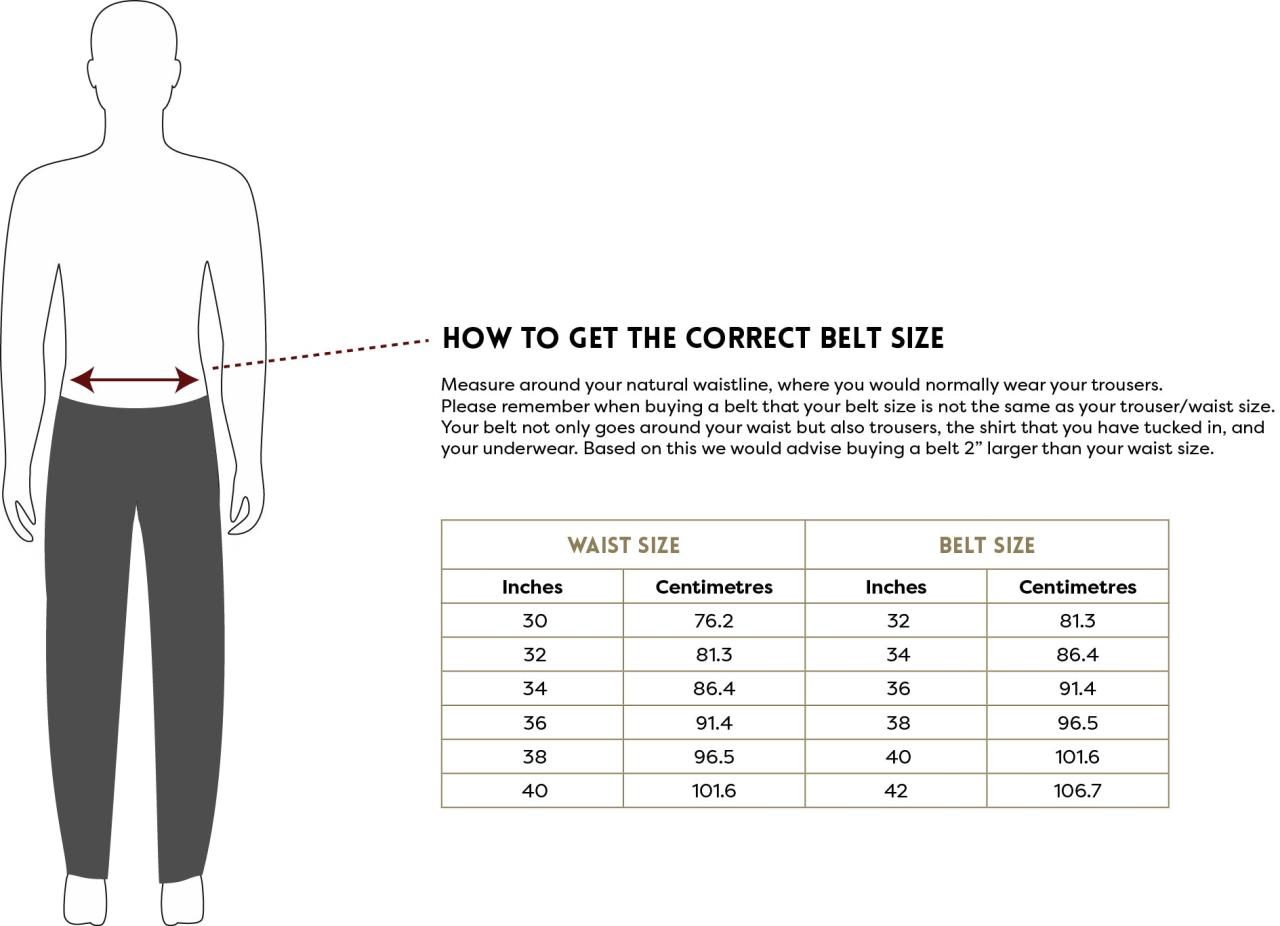
Accurate belt width measurement is crucial for proper fitting, ensuring compatibility with equipment, and preventing potential issues during operation. Incorrect width measurements can lead to malfunctions, reduced efficiency, and safety hazards. Precise width determination is vital for various applications, from industrial machinery to personal accessories.
Determining the correct belt width is essential for various reasons, including ensuring proper fit for the intended use, maintaining operational efficiency, and preventing potential malfunctions. Inaccurate measurements can result in belts that are too loose or too tight, impacting the system’s functionality and potentially leading to damage or injury.
Significance of Accurate Belt Width Measurement
Precise belt width measurement is critical for a variety of reasons. A correctly measured width ensures proper fit for the application, preventing issues such as slippage or excessive wear. It also guarantees compatibility with the associated equipment and machinery, thereby enhancing operational efficiency and reducing the risk of malfunctions. Furthermore, accurate measurements are vital for ensuring safety during operation by preventing potential hazards related to improper belt tension or alignment.
Methods for Measuring Belt Width
Several methods can be employed for measuring belt width, each with its own advantages and limitations. A common method involves using a flexible measuring tape, ensuring it is pressed firmly against the belt’s surface to obtain an accurate reading. For more complex belt shapes or those with intricate features, a digital caliper or a micrometer may be necessary to provide a precise measurement. Specialized equipment, such as laser scanners or imaging systems, can be used for automated measurements in industrial settings.
Importance of Consistent Measurement Practices
Consistency in measurement practices is paramount to ensure reliable and reproducible results. Using the same method and tools for all measurements, and maintaining consistent pressure against the belt’s surface, will yield more accurate and comparable results. This is particularly important when dealing with multiple belts or during quality control procedures.
Examples of Measuring Various Belt Widths
Measuring the width of a standard conveyor belt differs from measuring the width of a decorative belt. For a conveyor belt, a flexible measuring tape, pressed firmly against the belt’s surface, will suffice. A decorative belt, with its potential for intricate designs, may require a digital caliper for precise measurement of its varying widths.
Tools for Measuring Belt Width
Various tools are suitable for measuring belt width, depending on the complexity of the belt and the desired precision. A flexible measuring tape is often sufficient for simple, flat belts. Digital calipers and micrometers provide more precise measurements for complex shapes or intricate features. In industrial settings, laser scanners or imaging systems can be used for automated and highly accurate measurements.
Measuring Different Belt Styles
The method for measuring belt width varies based on the belt style. For a flat belt, a simple measuring tape will suffice. For belts with intricate patterns or curved surfaces, a digital caliper or micrometer provides more accurate results. In cases of belts with significant variations in width, multiple measurements at different points along the belt may be necessary to obtain a representative average width.
Factors to Consider When Measuring Belt Width
| Factor | Description |
|—————————|—————————————————————————————————————————————————————————————————————–|
| Belt Material | Different materials exhibit different characteristics affecting the measurement process. |
| Belt Surface | The surface of the belt, whether smooth, textured, or patterned, impacts the accuracy of measurement. |
| Belt Shape | The shape of the belt, whether flat, curved, or with other intricate designs, necessitates the selection of appropriate measuring tools and methods. |
| Measuring Tool | The choice of measuring tool depends on the precision required and the characteristics of the belt. |
| Environmental Conditions | Temperature and humidity can affect the material properties of the belt, impacting the accuracy of the measurement. |
| Number of Measurements | Multiple measurements at various points along the belt may be necessary to account for variations in width, especially for belts with significant width fluctuations. |
Common Mistakes and Troubleshooting
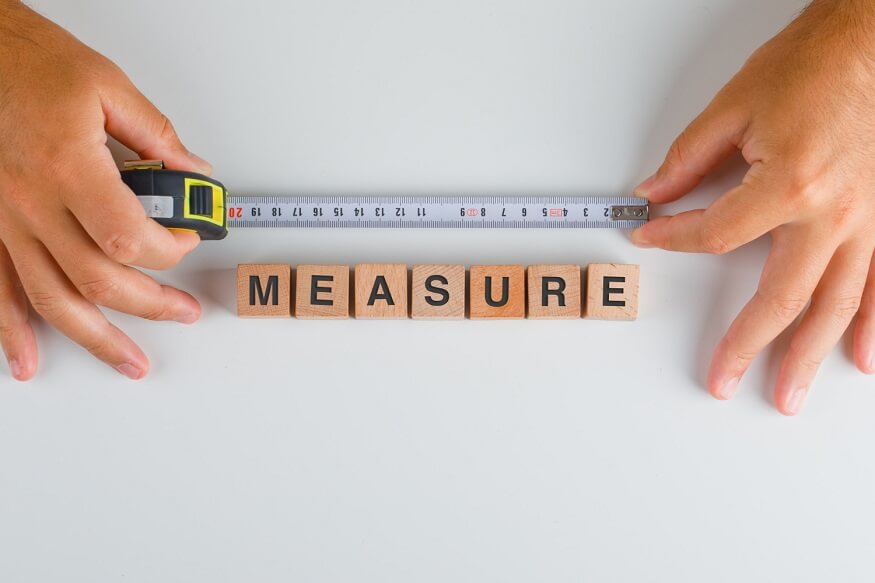
Accurately measuring belts is crucial for ensuring proper fit and function. Errors in measurement can lead to costly replacements, wasted materials, and potential equipment malfunctions. Understanding common pitfalls and their solutions will significantly enhance the accuracy of your belt measurements.
Careful attention to detail and a methodical approach are essential for avoiding errors. This section will detail common mistakes, their underlying causes, preventative measures, and troubleshooting steps for resolving measurement issues.
Common Measurement Errors
Improper handling of the measuring tape or rule, inconsistent tension during measurement, and inaccurate recording of the readings can all contribute to errors in belt measurement. It is vital to approach the process with precision and patience to achieve accurate results.
Handling the Measuring Tape
Incorrect handling of the measuring tape can lead to inaccurate readings. For example, if the tape is not held straight, the measured length will be incorrect. Ensure the tape is held taut and aligned along the length of the belt. Using a second person to hold the tape at the starting and ending points can help ensure straight alignment.
Measuring Belt Tension
Maintaining consistent tension throughout the measurement process is paramount. If the belt is too loose or too tight during measurement, the recorded length will be inaccurate. Ensure the belt is under its typical operating tension to obtain an accurate measurement. If the belt is very flexible, use a more rigid measuring tape and take the measurement several times, comparing results.
Recording the Readings
Carefully recording the readings is critical. Errors in transcribing the measurements can significantly impact the final result. Double-check all readings to ensure accuracy. Use a separate sheet of paper or a digital device to record measurements.
Troubleshooting Measurement Issues
Addressing issues during the measurement process is crucial for obtaining reliable data. If the belt has complex curves or bends, use multiple straight-line measurements and carefully add them to find the total length. For very long belts, consider using a combination of techniques to ensure accurate measurement, such as marking points on the belt with a pen and then measuring the distances between those points.
Fixing Errors in Belt Measurements
If an error is detected, carefully review the measurement process. Check for inconsistencies in tension, alignment, and recording. Re-measure the belt, ensuring all the steps are followed precisely. Compare your results with another person’s measurements to ensure accuracy.
Tips for Improved Accuracy
Employing several strategies will significantly improve the accuracy of belt measurements. Always use a reliable measuring tape or ruler. Ensure that the belt is clean and free of debris before measuring. Take multiple measurements and average the results to account for minor variations.
Table of Common Measurement Errors and Solutions
| Error | Cause | Solution |
|---|---|---|
| Inaccurate Length | Measuring tape not held straight, inconsistent tension | Ensure tape is held straight and taut, measure several times and average. |
| Incorrect Width | Measuring tape not perpendicular to belt, inaccurate reading | Use a ruler perpendicular to the belt and ensure the tape aligns correctly. |
| Inconsistent Tension | Belt not under typical operating tension | Measure the belt under the normal operating tension. |
| Transcription Errors | Incorrect recording of readings | Double-check and re-record readings if necessary. |
Belt Measurement for Specific Applications
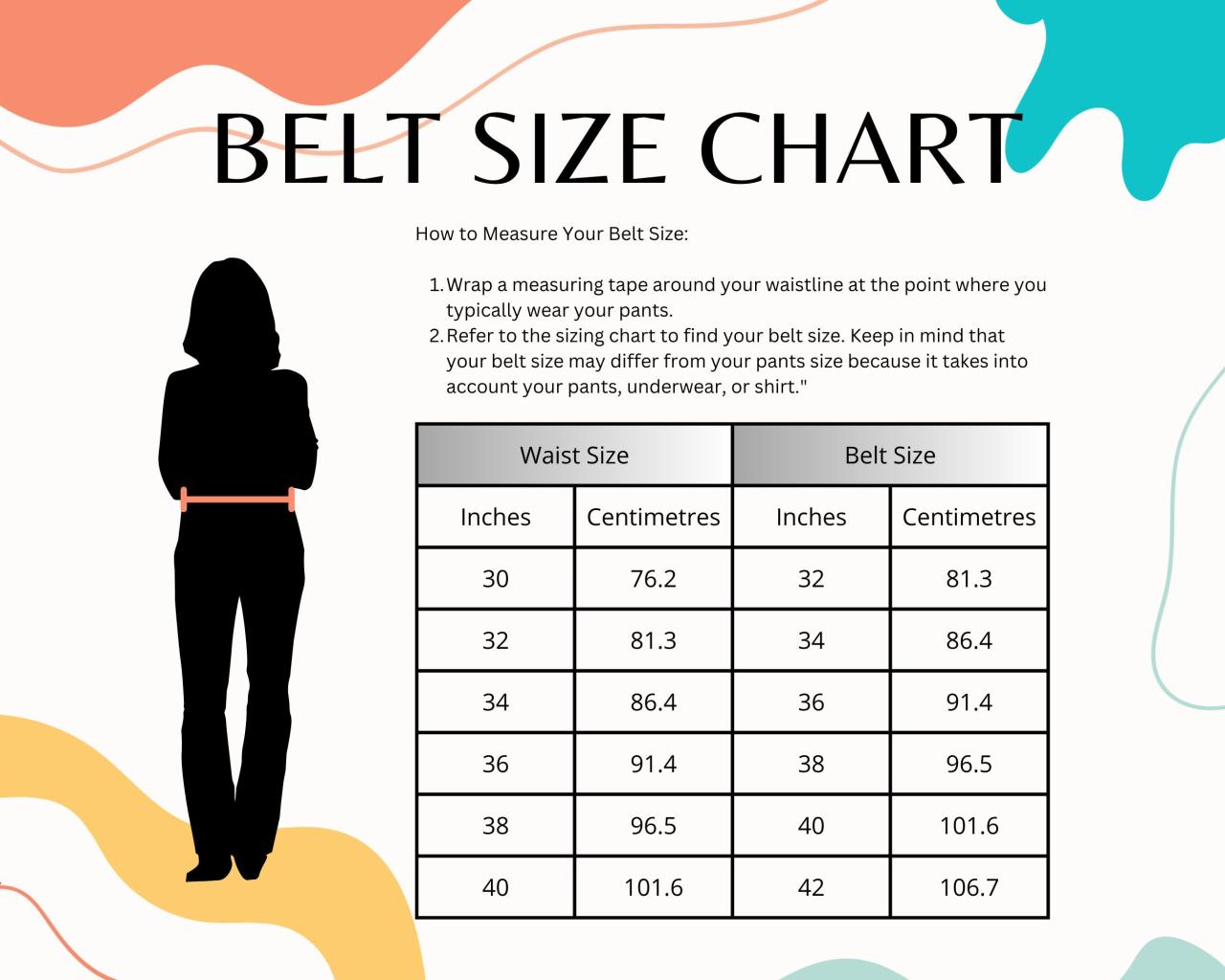
Belt measurement procedures are not universally identical; the specifics depend heavily on the application and the industry. Different industries have varying requirements for belt dimensions, tolerances, and even the methods used for measurement. Understanding these nuances is crucial for ensuring safety, optimal performance, and proper functionality of the belt system.
Proper belt measurement is not just about obtaining a number; it’s about ensuring the belt meets the precise demands of its intended use. Different industries and applications require specific tolerances and considerations, from conveyor belts in mining operations to timing belts in precision machinery. Accurate measurements are fundamental to avoid issues like premature wear, system failure, and potential safety hazards.
Belt Measurement Variations Across Industries
Different industries demand distinct belt characteristics. Conveyor belts in mining, for instance, require robust construction and high-load capacity, translating into specific width, thickness, and strength requirements. Conversely, timing belts in precision machinery need exceptional accuracy and minimal variation in length to maintain synchronized operation.
Specific Requirements for Various Industries
- Mining: Conveyor belts in mining often face extreme environmental conditions and substantial load demands. Measurements must precisely account for the belt’s ability to handle the weight and abrasion resistance needed for the specific mineral transport. Tolerances are typically wider than in precision applications, acknowledging the inherent variations in material and conditions. Accurate measurement is crucial for ensuring safe operation and minimizing maintenance.
- Manufacturing: In manufacturing, belt measurements depend on the specific machine and process. Conveyors for assembling products require precise lengths to ensure smooth flow, while timing belts in automated machinery need highly accurate lengths to maintain synchronicity in the production process. Tolerances are generally tighter in this sector than in mining, reflecting the need for consistent operation.
- Food Processing: Food processing belts need to be constructed of materials resistant to chemicals and bacteria, while also handling potentially heavy loads. The belt must also be smooth to avoid product damage and easy to clean. Measurements must account for these special materials and potential cleaning needs.
Examples of Belt Measurement Differences
Consider a 50-meter conveyor belt. In a mining application, the tolerance for length might be ± 50 mm, accommodating potential variations in material handling. In contrast, a 10-centimeter timing belt for a precision machine might have a tolerance of ± 0.1 mm, emphasizing the extreme precision needed. These tolerances directly affect the belt’s ability to function as intended.
Comparison of Measurement Methods
Different types of industrial belts necessitate specific measurement methods. Conveyors often use a combination of linear measuring devices and direct measurement tools like tape measures and calibrated rulers. Precision belts might rely on laser scanners or specialized digital calipers to ensure the highest degree of accuracy. A proper choice of tools is vital for the accuracy of the measurements.
Significance of Proper Belt Measurement in Safety
Proper belt measurement directly impacts safety. Incorrect measurements can lead to belts that are too short, causing slippage or breakage under load, or too long, leading to potential entanglement hazards. In high-risk environments like mining, accurate measurement is a critical safety precaution.
Importance of Accurate Measurements for Optimal Performance
Accurate measurements are vital for maintaining optimal belt performance. Incorrect measurements can result in premature wear, reduced lifespan, and potential equipment failure. Consistent operation relies heavily on precise measurements to maintain the integrity of the belt system and minimize downtime.
Belt Measurement Requirements Comparison Table
| Industry | Belt Type | Length Tolerance (mm) | Width Tolerance (mm) | Measurement Method |
|---|---|---|---|---|
| Mining | Conveyor Belt | ± 50 | ± 5 | Tape measure, linear measuring device |
| Manufacturing | Conveyor Belt | ± 2 | ± 1 | Laser scanner, calibrated rulers |
| Food Processing | Conveyor Belt | ± 1 | ± 0.5 | Digital calipers, laser scanners |
| Precision Machinery | Timing Belt | ± 0.1 | ± 0.05 | Laser scanners, digital calipers |
Illustrative Examples of Belt Measurement: How To Measure A Belt
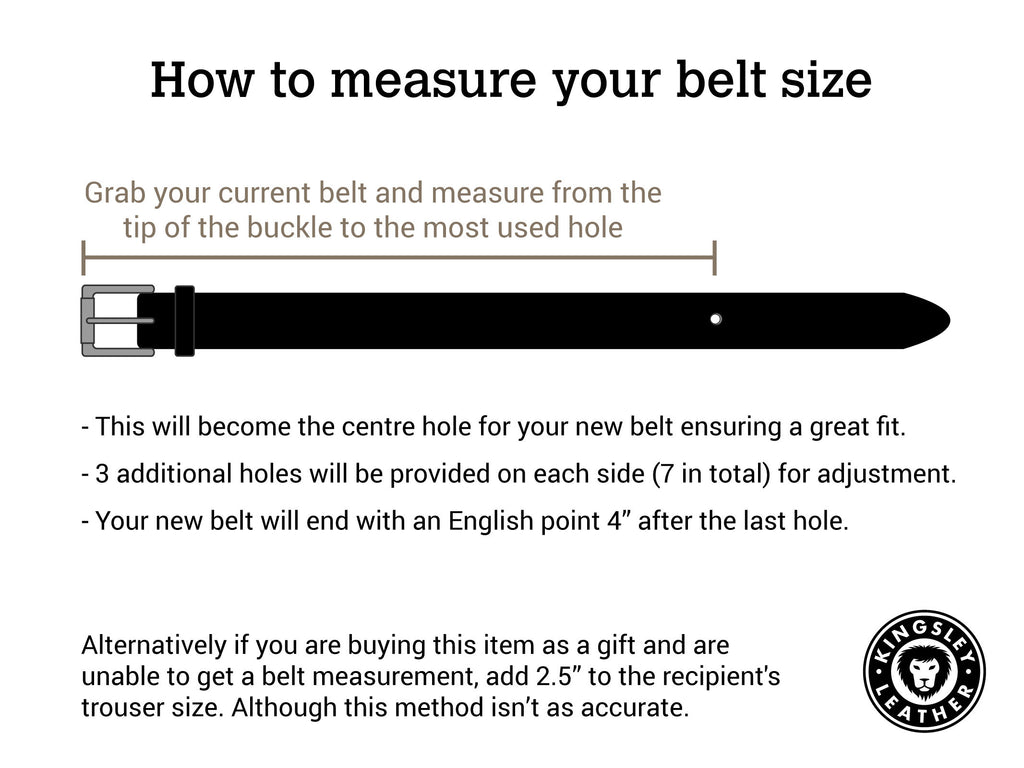
Belt measurement procedures extend beyond standardized approaches. Diverse belt styles, intricate designs, and unique features necessitate tailored methods. Understanding these variations allows for precise measurements and accurate fitting.
Measuring Various Belt Types
Different belt styles demand specific measurement techniques. A simple, flat belt requires a straightforward approach, while a more complex belt with decorative elements necessitates careful consideration. Accurate measurement is paramount, whether for replacement, customization, or ensuring a comfortable fit.
- Flat Belts: For flat belts, a standard measuring tape is sufficient. Lay the tape flat against the belt, aligning it with the edge. Record the length from one end to the other. Width is measured perpendicular to the length, ensuring consistent placement.
- Buckled Belts: Buckled belts present a different scenario. Measure the length from the buckle end to the opposite end, stretching the tape to align with the belt’s curve. The width is measured in the same way as a flat belt.
- Belts with Embellishments: Belts featuring intricate designs or embellishments, like rivets or clasps, necessitate meticulous attention. The measuring tape should avoid contact with these elements, focusing on the belt’s main body. Accurate measurement of width and length is critical to ensuring the embellishments are not overlooked in the final product.
Measuring Belts with Intricate Designs
Belts featuring complex patterns or decorations demand meticulous attention to detail during the measurement process. Avoid pressing the tape against the decorative elements. Focus on the main body of the belt, ensuring a precise and accurate representation of the belt’s dimensions.
- Belts with Intricate Stitching: Intricate stitching can add complexity to belt measurement. Carefully position the measuring tape alongside the belt’s body, avoiding contact with the stitching itself. The tape should lie flat against the belt’s surface, ensuring accurate length and width measurements.
- Belts with Raised Patterns: Raised patterns or textures on the belt can influence the measurement process. The tape should be positioned to avoid contacting the raised parts. The tape should be positioned to capture the overall dimensions of the belt’s body.
Measuring Belts with Unique Features
Unique belt features, like unusual closures or unusual shapes, necessitate a tailored measurement approach. These procedures are specific to the unique design of the belt. Careful observation and precise measurement techniques are paramount to avoid errors.
- Belts with Custom Closures: Belts with custom closures, such as unique buckles or clasps, require a specific approach. Carefully measure the length of the belt from one end to the other, taking care not to measure any parts of the custom closure. The width is measured perpendicular to the length, taking care to avoid contact with the custom closure.
- Belts with Shaped Bodies: Belts with shaped bodies, such as curved or tapered designs, demand a more sophisticated measurement method. Measure the length along the curve, ensuring the tape follows the belt’s shape. The width should be measured at multiple points along the belt’s length, as it may vary.
Illustrative Table of Belt Measurement Examples
| Belt Type | Measurement Procedure | Tools Needed | Notes |
|---|---|---|---|
| Simple Flat Belt | Measure length and width along the belt’s flat surface. | Measuring tape | Straightforward measurement. |
| Buckled Belt | Measure from buckle end to opposite end, stretching tape along the curve. | Measuring tape | Consider the curve of the belt. |
| Belt with Embellishments | Measure length and width, avoiding contact with embellishments. | Measuring tape | Focus on the belt’s body. |
| Belt with Intricate Stitching | Measure length and width, avoiding contact with stitching. | Measuring tape | Focus on the belt’s body. |
Clarifying Questions
How to measure a belt – What if my belt has a complicated buckle?
Measure around the belt, excluding the buckle. If the buckle is very large and adds significant bulk, you may need to add extra length to account for it.
How do I measure a curved belt?
Lay the belt flat and measure along the curved part, ensuring the tape measure follows the belt’s contours.
What tools are best for measuring belt width?
A flexible measuring tape is the most common and reliable tool. A ruler may also be used, particularly for straight belts.
What if I’m unsure of the correct belt length?
For optimal results, measure the belt you are currently wearing. If the belt is a gift or for a custom fit, try to measure the belt’s wearer to ensure a perfect fit.